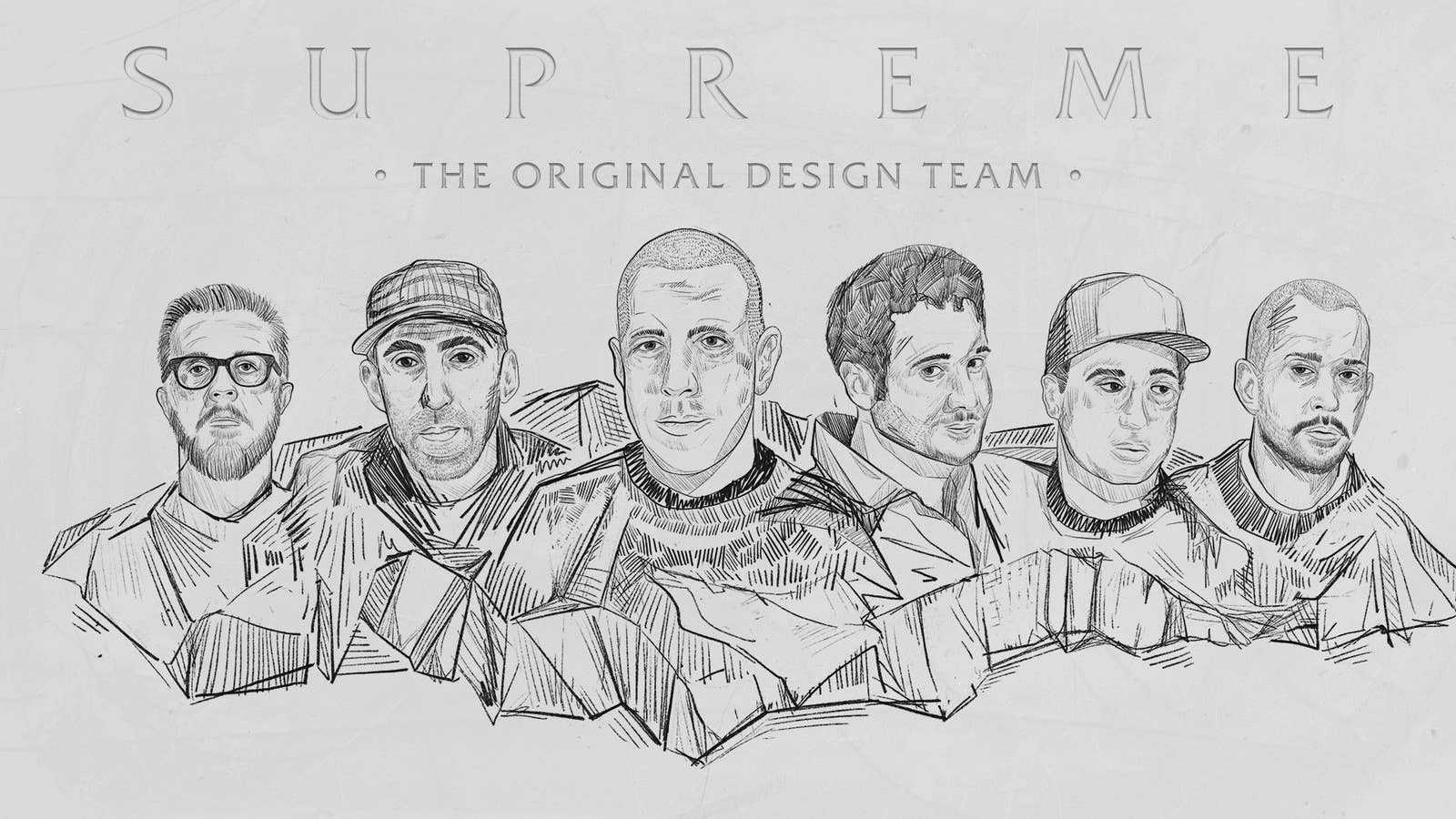
Having a major clothing brand was never something James Jebbia, Supreme’s founder, envisioned. When he opened Supreme’s doors in April of 1994 it was one of the only skateboard shops in SoHo, and he wanted to create a clubhouse for New York’s budding skateboard scene downtown. The shop was conveniently located near iconic skate spots like the Astor Place cube and the Brooklyn Banks. Customers could get their skateboards setup, or buy hardware and apparel from skate brands like Zoo York and Shorty’s. Supreme did have some branded apparel. The store launched with three T-shirts: one featuring an image of Robert Deniro from Taxi Driver, another showcasing a photo of a skater with an afro, and one with the store’s much coveted box logo—only 60 of each were made. But there weren’t any Gore-Tex jackets, quirky accessories or mohair cardigans—the pieces that have become synonymous with its coveted drops.
So how did Supreme become the apparel company that collaborates with French fashion houses like Louis Vuitton and Jean Paul Gaultier? It all started with a Japanese businessman named Ken Omura who runs the distribution company OneGram in Japan. Japanese consumers were enamored with Supreme and Omura approached Jebbia about opening Supreme stores in the country. It was a meeting that redefined Jebbia’s vision. “Up until that point, I had simply looked at Supreme as a skateboard store and not really a brand itself,” Jebbia told Rizzoli in an interview published in the Supreme book, which was released in 2010. “I had to conceive Supreme [as a larger company] because [Omura] actually opened three stores in really quick succession and he didn’t have anything to sell. So I had to start making more Supreme products to fill the stores.”
Jebbia had experience curating and selling clothing through running the Union and Stussy stores in New York, which opened in 1989 and 1991, respectively, but he needed a design team to make product. Enter the first Supreme design hires: Brendon Babenzien, Geoff Heath, and Augie Galan. Often times the media focuses on Jebbia, who has always been Supreme’s main conductor. But Babenzien, Heath, and Galan, three guys who never graduated from fashion school nor had a lot of experience designing clothes, helped create the foundation for Supreme apparel, and ultimately, a blueprint for how streetwear and luxury brands designed clothing and utilized graphics.
“We knew nothing. Everyone grew up wanting to make skate T-shirts, but nobody went to school or was properly educated,” says Heath, Supreme’s first hired graphic designer who learned how to print T-shirts when his mother gave him a screenprinting kit at 14. “You would run into people in the business and ask a million questions to try and learn. Even when Pervert fell apart and Brendon came up to New York to start working at Supreme, it was the same thing. We were just stumbling through.”
The demise of Pervert, a Miami based streetwear brand founded by Don Busweiler, led to the formation of Supreme’s original design crew. Babenzien moved down to Miami to help Busweiler, a childhood friend from Long Island. Heath, an Atlanta native who moved to Miami Beach in 1989, also joined the Pervert team. He designed graphics for Pervert with just pen, paper, and a Xerox machine while working at Busweiler’s store, Animal Farm. Within five years, the Pervert crew went from screen-printing T-shirts in Busweiler’s kitchen to celebrities like Janet Jackson wearing pieces from the line. But in 1995, Busweiler abandoned Pervert to join a cult, and Heath and Babenzien decided to leave the brand.
Following their departure from Pervert, the duo briefly went to work for another Miami-based streetwear brand, Mankind. Founded by Scott Nelson, a Pervert affiliate, Mankind was one of the first streetwear brands to successfully manufacture a full clothing line in Italy, but prematurely shuttered after its financier went bankrupt. Serendipitously, that led to Babenzien getting hired at Supreme.
“I knew that Brendon wanted to move back to New York, and then I had already been selling Mankind to James at Union, so I reached out to him and said, ‘You should hire this dude,’" Scott Nelson tells me. "‘He's moving to New York, he spent time in Italy working for me and doing production there, you should hire him.’ And he did.”
Jebbia was impressed by Pervert—it was one of the few streetwear brands stocked in Union. When Babenzien, who declined to comment for this story, started at Supreme in 1996, he was 24 years old. Heath stayed in Miami to DJ, but Babenzien would send him freelance work for Supreme like making garment label tags. A couple months after Babenzien moved back to New York, he asked his former co-worker to relocate there and work full-time for Supreme. Heath said yes and moved into a two-bedroom apartment on Eldridge Street on the Lower East Side with Babenzien and Jebbia’s brother Dan. During Babenzien’s first year working for Supreme, the brand didn’t even have an office. When Heath arrived in the winter of 1997, Jebbia secured Supreme’s first office at 430 Greenwich St. in Manhattan’s Tribeca neighborhood. The workspace doubled as a clothing warehouse; Heath describes it as a “shithole.” There were literally noticeable holes inside the warehouse’s wooden floors, rats skittering around, and no heat in the dead of winter. But in the back of the warehouse, there were two desks and a computer.
“On my first day of work, me and James Jebbia weren’t even in the same office,” remembers Heath, who was 24 at the time. “He was on Spring Street at the Stussy store. It was basically like, ‘I got this computer, this desk, and everything else for you. Now go at it.”
Since Heath was hired to work on graphics for Supreme, he was also tasked with making business cards and sale signs for Union, which is where he met the third member of Supreme’s original design team, Augie Galan, who was working retail there.
“It's like we knew each other right away,” says Galan, who was 22 years old when he began working at Union in 1997. “The minute Geoff came in, he told me about what he was doing. I'm like, ‘Oh, shit. This is my fucking chance. I got to get the fuck out of this retail shit because it’s boring as fuck and I’m not going anywhere.’”
Galan had no experience designing a T-shirt or even clothes, for that matter. But unlike Heath and Babenzien, he was a New York City skater who grew up in Queens and previously worked at local skateboard shops such as Blades in SoHo. At the time, Galan worked at Union five days a week and then spent the rest of his free time working on one of the first hip-hop e-commerce sites, Platform—a site that sold streetwear brands like Triple 5 Soul and Conart. But despite Galan’s lack of design experience, he decided it was worth approaching Jebbia to see if he could get involved with producing clothes for Supreme. “I knew I was much smarter than just doing the fucking retail thing,” Galan says. “So I was like, ‘Give me a shot. Let me move in there and prove what I can do.’ He gave me a shot.”
By the time Galan joined the design team, Supreme and OneGram had opened three stores in Tokyo, Osaka, and Fukuoka within a time span of six months in 1998. By then, Supreme was already taking off, even being featured on MTV Japan. Having a platform there was instrumental to its growth as a streetwear brand. “If it wasn't for Japan, Supreme wouldn't be what it is,” says Galan. “James already knew that Japan was setting the trends. He already knew that going to Japan and building the brand there would only bring it back to the United States and make it bigger.” A lottery system to line up for Supreme drops in New York City started in 2017, but in Japan, the demand for the brand was so large that they started utilizing the same lottery system in the early 2000s.
“I had no idea about anything in Japan,” remembers Heath. “When I came up here, Brendon would say, ‘Our partner, OneGram, is in Japan. They have stores with long lines and hold lotteries to get spots on the line.’ That was unheard of at the time.”
Although the opening of Supreme stores in Japan pushed the brand to focus more on building out an actual clothing line, Heath recalls only three things the designers had to remember when accommodating Supreme's enthusiastic Japanese audience. One was to avoid green because that color didn’t sell well in Japan. Another was that T-shirts had to be produced in a smaller fit compared to traditional American sizing. And, lastly, the Japanese loved accessories for their desks. Besides that, the most common direction Jebbia gave to his designers was to make Supreme's clothing “tough,” whether it was being sold in Japan or the U.S.
“Anything that came out of New York had this edge or toughness. James always tried to apply that to Supreme’s graphics, the styling of the clothes, and the actual garments made,” says Heath. “He would look at some of my graphics and go, ‘I need them to be tougher. I need them to be hard-hitting.’ That's all you had to go off of, and there was no other explanation.”
Ever since Supreme printed Travis Bickle from Taxi Driver on its first T-shirts, it's been known for gritty graphics influenced by myriad sources. The infrastructure of any streetwear brand is built off of strong graphic designs, and the art of finding references is something Supreme mastered. But since Google only began in 1998, Heath had to sift through newsstands, museums, libraries, and bookstores in New York City to hunt down references to turn into graphics. One spot he frequented was a church basement on 13th Street that held a treasure trove of magazines. “They had every Vogue magazine up to date, every Mademoiselle, every Sports Illustrated that you could find. So you would just sit there and dig for unique things that could be applied to Supreme with a New York angle that works."
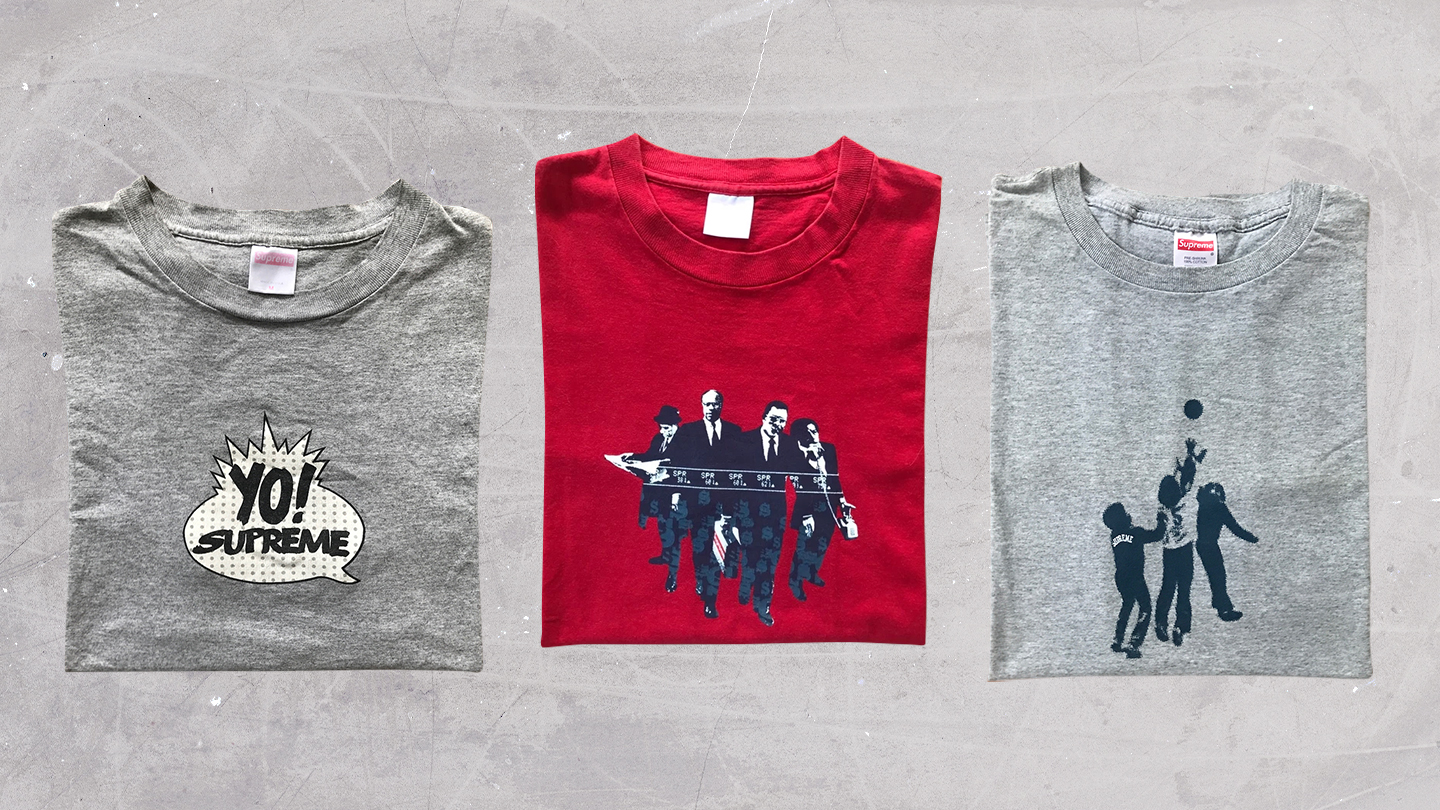
Based on its early T-shirts, Supreme was always adept at tapping into both highbrow and lowbrow culture in subtle ways. Popular ’90s TV shows like Yo! MTV Raps received Supreme logo flip treatments by Heath—and Jebbia’s love of The Sopranos led Heath to design a T-shirt that replaced the “R” of a Supreme box logo with a handgun. A 1978 comic book cover that depicted Muhammad Ali fighting Superman was photoshopped by Heath nearly 20 years later to show the two fighting each other wearing Supreme-branded boxing gloves and shorts. Although many of its early graphics would throw copyright lawyers into a frenzy today, Supreme was operating on a smaller playing field back then. “It wasn’t like how it is now, where there are groups of lawyers sitting around the internet digging for stuff. It was just a free-for-all,” says Heath, who remembers copyright laws being something most streetwear brands during the ‘90s worried little about. “Nobody cared about sending you a cease-and-desist. If it happened, you just dealt with it. It wasn't till 2004 or 2005 that James was getting tired of dealing with it, and that’s how collaborations properly came about.” Other T-shirts Supreme released in its first 10 years veered into more obscure territories, like a T-shirt graphic directly pulled from a photo by New York Times photographer Paul Hosefros; it was an image of kids playing street basketball in the Bronx while an apartment building burns in the background.
“Books about classic paintings, New York City life, hip-hop, punk, rock, and reggae, you're just gathering all this information to pull out ideas and references,” says Heath, who bookmarked inspiration with a Sony Digital First camera and scanned pages at the New York Public Library in Bryant Park. “It’s not like buying one book or pointing to a movie and saying, ‘This is what I want.’ It was more like, ‘Here’s a scene from a movie or a clipping from this book.’”
“Anything that came out of New York had this edge or toughness. James always tried to apply that to Supreme’s graphics, the styling of the clothes, and the actual garments made."-Geoff Heath
Although Heath made everything from bootleg Louis Vuitton box logos to Brillo box logo flips, he wasn’t the only graphic designer who had an eye for tough references. Since Jebbia welcomed a number of young streetwear brands into Union, he established a rotary of rising creatives that he could call up for freelance design work. “I always had a great vibe with James; he’s, like, one of my top five mentors,” says Russell Karablin, the founder of the New York City streetwear brand SSUR and the artist behind classic Supreme pieces like the “Illegal Business Controls America” T-shirt—the Wall Street broker photographed wearing a Supreme T-shirt as he was arrested by FBI agents was actually Karablin’s childhood friend. SSUR was also one of the first brands Supreme collaborated with in 1999. One shirt from that collab highlighted a scene from Sergio Leone’s 1984 masterpiece Once Upon a Time In America, when a gang of juvenile New York City mobsters burn down a newsstand.
“That movie was a story about a group of young New York street kids that grew up to be gangsters. I thought that portrayed the attitude of the skate movement and the downtown scene at that time,” says Karablin, who let Supreme skaters chill at his SSUR store on Mulberry Street and remembers Supreme being a part of a larger wave of streetwear stores in downtown New York. It was a moment in New York when brands like Triple Five Soul were booming and stores like Alife had just opened its doors. Yet, in its early years, Karablin felt there was something different about Supreme. “It wasn’t just graphics or anything like that. I always felt it was a part of something bigger. I was happy and excited to do it. I knew those graphics would have longevity and make a mark on the culture.”
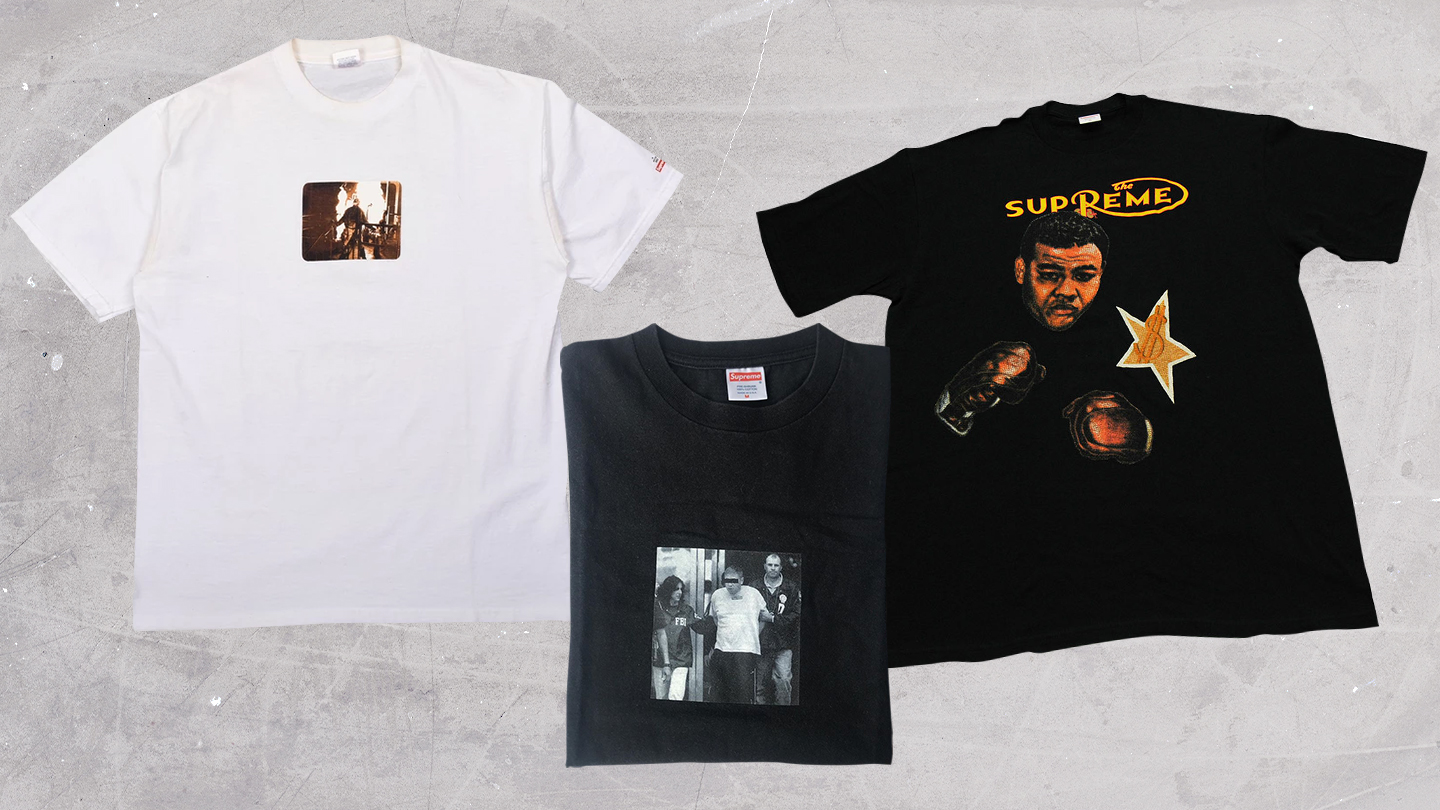
Alongside Karablin, indie film directors like Mike Mills, streetwear veterans like Greg Johnsen, and vinyl toy pioneers like Jakuan Melendez, have contributed designs for the brand. However, like the brand’s mysterious founder, many of Supreme’s original designers move quietly and let their clothes speak for itself. But they all recall one thing: Jebbia having high standards.
“He was tough, but it was in an awesome way,” says Karablin. “Supreme has the stature it does today because James didn’t just accept anything. He was very methodical about the way he did things.”
Even before working at Supreme, Galan remembered Jebbia as a stoic, no-nonsense businessman. When Galan started working at Union, he says most of the business was handed over to the store’s co-owner, Mary Ann Fusco, with whom Jebbia had been romantically involved. Although Jebbia became more focused on Supreme, Galan felt he still held the Union store close to his chest. Every morning, Galan saw Jebbia drive up to Union, park his car in front of the shop, and drop in just to say hello. “There was always that kind of underlying pressure when you were working for him,” says Galan. “It felt like if you weren't working 110 percent, you might not have a job the next day.” During Galan’s second day working at Supreme, he remembers Jebbia calling him to check on how he was doing. Galan said everything was taken care of, which was the wrong answer.
“He completely flipped on me on a dime,” Galan recalls. “He was just like, ‘What the fuck are you saying?’ And just started cursing me out. He laid into me for 10 minutes, telling me that I should never tell him everything's good and that I should always be fucking working my ass off.”
So that’s exactly what Galan, and everyone else, set out to do.
“We took each garment and basically dissected it, piece by piece, found every component at its highest level, and then put it back together."-Augie Galan
“No one was going to beat us at how hard we worked or how we would always go one step further than everyone else,” says Heath. “I would just go until my feet hurt to find something that no one else was going to find. Brendon would travel to a fabric show that no one else would go to and dig through warehouses to find fabrics. Augie would go out to find anything and everything he possibly could.”
As a small skate brand, the biggest challenge Supreme faced when developing a clothing line in the late ’90s was making high-quality apparel. At the time, well-made clothing wasn’t something brands in its sphere were known for. “All skate companies would make products in China or print on low-quality blanks,” says Jamie Story, a New York skater who hung out Supreme since the store’s opening day and later helped design iconic graphics for the brand like the “Bling Box" logo. “So we would all fiend to get, like, RRL Jeans because they fit well, lasted, and had the illest quality.” Jebbia has said the biggest inspiration behind Supreme’s clothing was simply what New York City skaters wore in the ’90s. But he wanted to make clothes that could stack up to brands like Polo Ralph Lauren, Carhartt, and even Gucci, which was a big undertaking for a team that didn't have an extensive design background.
“Our whole thing was to make it better than the best people who we think can make it. If we were going to make a pair of khakis, we want it to be better than RRL,” says Galan, who remembers spending his days taking trips to the Polo Ralph Lauren sample house in New Jersey, cold-calling manufacturers out of a phone book, and buying fabric from wholesalers in the Garment District or Lower Manhattan. “We took each garment and basically dissected it, piece by piece, found every component at its highest level, and then put it back together. That’s how we got this reputation in the early days for making really nice shit.”
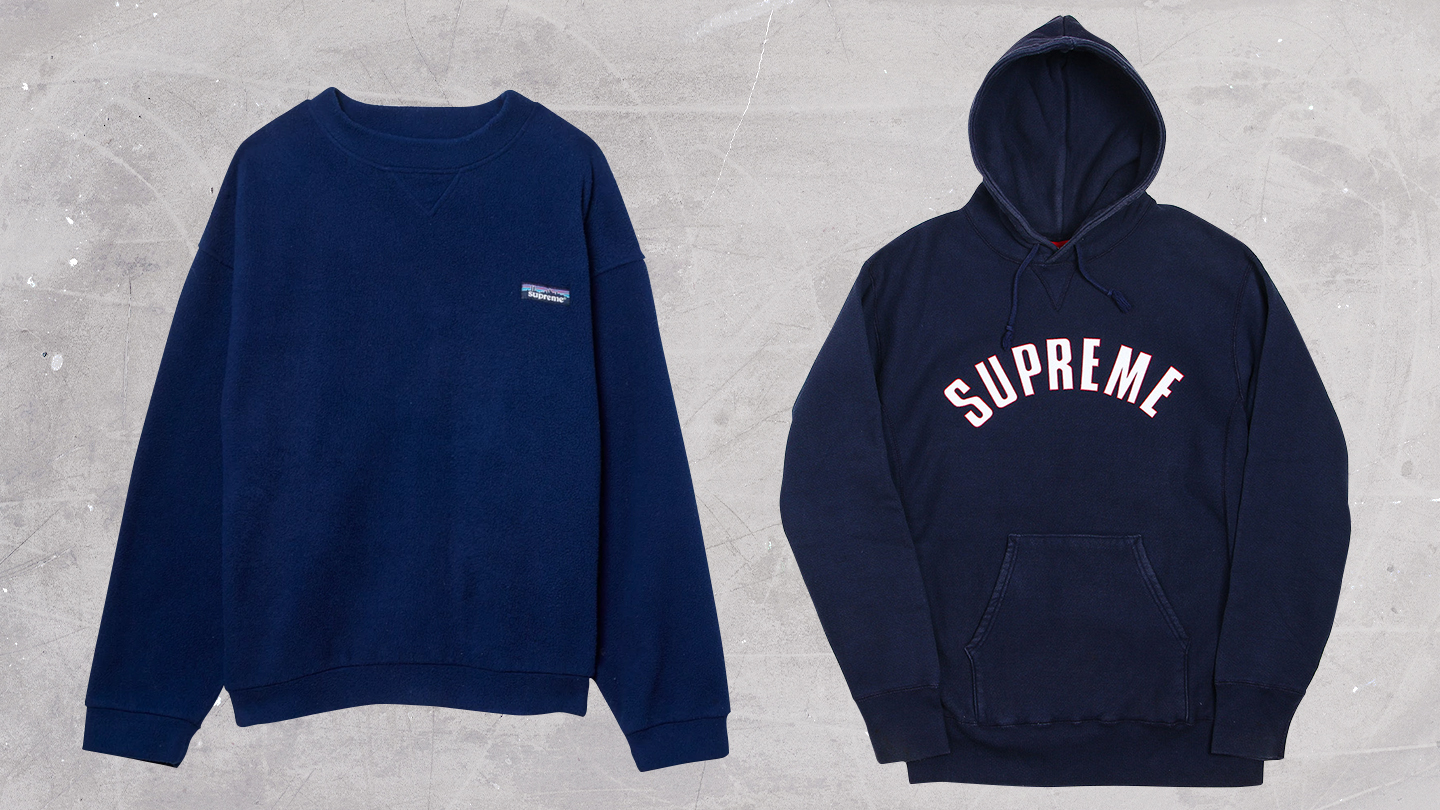
By 1998, Supreme could domestically produce a line of Patagonia-inspired outerwear that included deep pile fleece jackets and lightweight nylon windbreakers with breathable mesh net fabric. By 2000, the brand was able to manufacture camp caps out of Japanese fabrics and French M-51 coats with British Miller Rain cotton sourced directly from England. Although it was the norm for brands to produce on a larger scale and outsource production to China, Supreme stayed committed to producing small but high-quality runs of clothing, a strategy more brands have since adopted.
To do that, Supreme used domestic manufacturers such as Spiewak in New York, Alpha Industries in Tennessee, Brent’s Sportswear in Arkansas, CYC in Canada, and others, some of which it still uses today. With the costs of importing fabric, making custom buttons, ordering custom threads, and assembling it in a factory in New Jersey, a pair of khakis could amount to $45 to make and then be sold for $120. This was a standard retail markup, considering the high cost of having good-quality garments produced domestically. “James always charged a fair price. He was never into gouging the customer, as he always believed they should be able to afford it at a reasonable expense,” says Galan. By the end of the ‘90s the design team was producing pants, sweatshirts, crewnecks, hats, backpacks, military jackets, jeans, trousers, and shorts with fits that were all unique and customized for Supreme.
Both Galan and Heath say designing clothes for the brand was a collaborative and free process. In 2000, Jebbia moved Supreme’s operations to 17 Vestry St, a small two-floor carriage house. Supreme’s warehouse operations worked out of the ground floor, while the design team took a 30-foot-by-18-foot unit on the second floor, where a family lived next door. “That place was the shit because it was pretty much our own spot and James was nowhere,” Galan says. “He was in SoHo and rarely came over. He’d call us sometimes, but he just kind of let us do our own thing.”
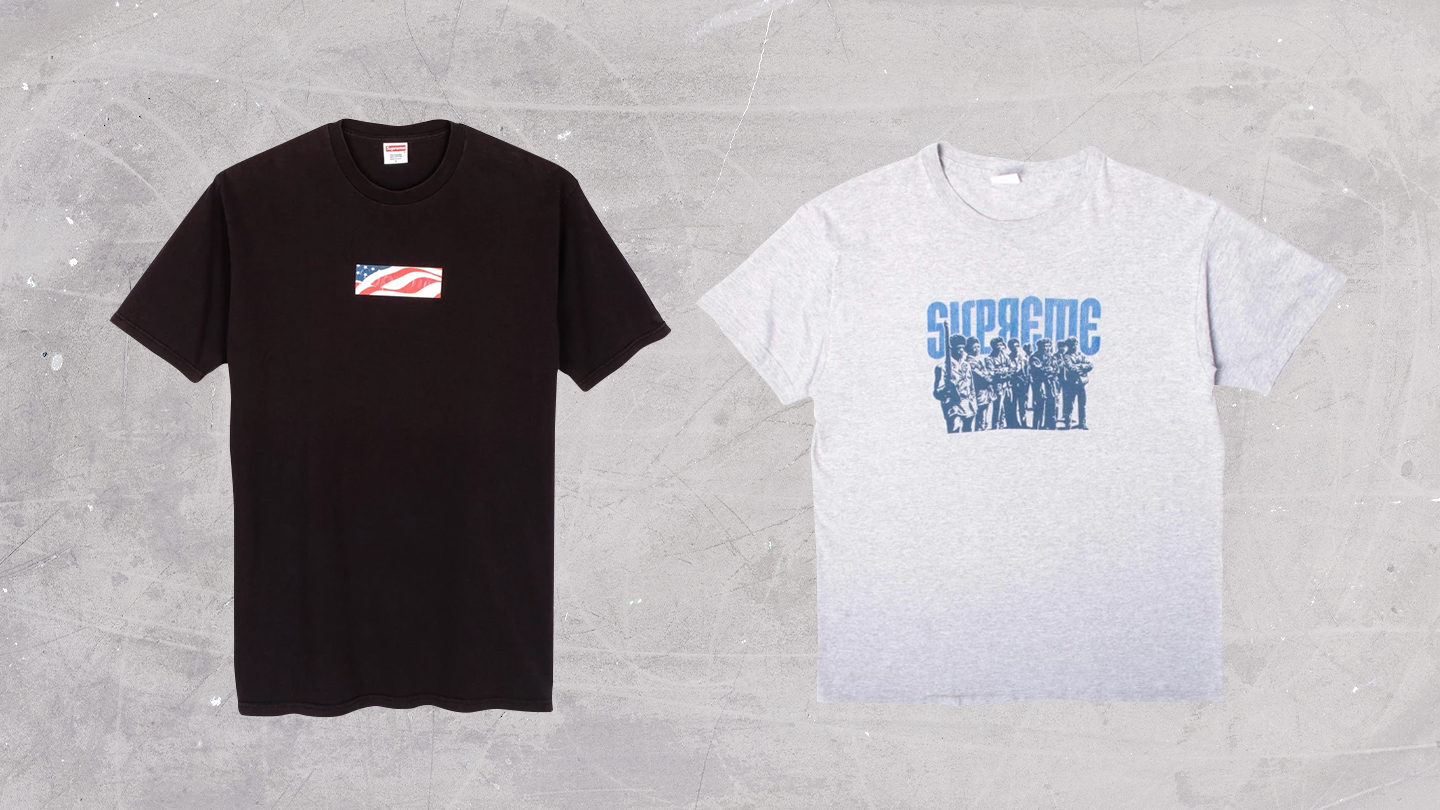
But Jebbia was adamanant about everything meeting "Supreme" quality. Karablin once had a jeweler hand-make a gold Supreme boxing glove charm with an Everlast logo flip. Despite the jeweler’s craftsmanship, the logo didn’t look perfect enough for Jebbia to put into production. For six months, Galan labored over a pin that looked like an iced-out box logo. But Jebbia didn’t like that the bling wasn’t real diamonds. “We would have sold tens of thousands of these pins and he never made it,” says Galan. “I think, with him, he just wasn’t ready to actually make a diamond version of it at that point, but wanted to. In those early days, if it wasn’t like a Rolex, he didn’t want it. If he ever thought it was second best, he just wouldn’t put it out.”
From conception to selling it at a store, Galan estimates that it took approximately four months to design, manufacture, and release a seasonal collection. Although Galan says the team worked at a breakneck pace, Supreme’s retail model of only selling products within its stores freed them from some of the restraints that most streetwear brands face. Since the brand never courted retailers to stock its products, it didn’t have to make samples or line sheets three months in advance for trade shows or have its products approved by anyone but Jebbia. On rare occasions, the team could have kept designing new pieces up until eight weeks before they were set to drop in store.
“I always liked the early years, because it was kind of like this perfect combination of our artistic expression and our consumer needs to just sell,” says Galan. “Having this go directly to retail was amazing because we just didn’t have to listen to any sales-driven showrooms or follow anybody else’s way of doing it.”
Supreme was following what luxury brands and designers like Helmut Lang were doing in terms of quality, but the end consumer was never supposed to be a SoHo fashionista. “It was for the individual who wanted toughness with sophistication,” says Galan. “‘Tough’ not in just the way it was made, but also how it would look on the very skaters that represented the face of the brand.”
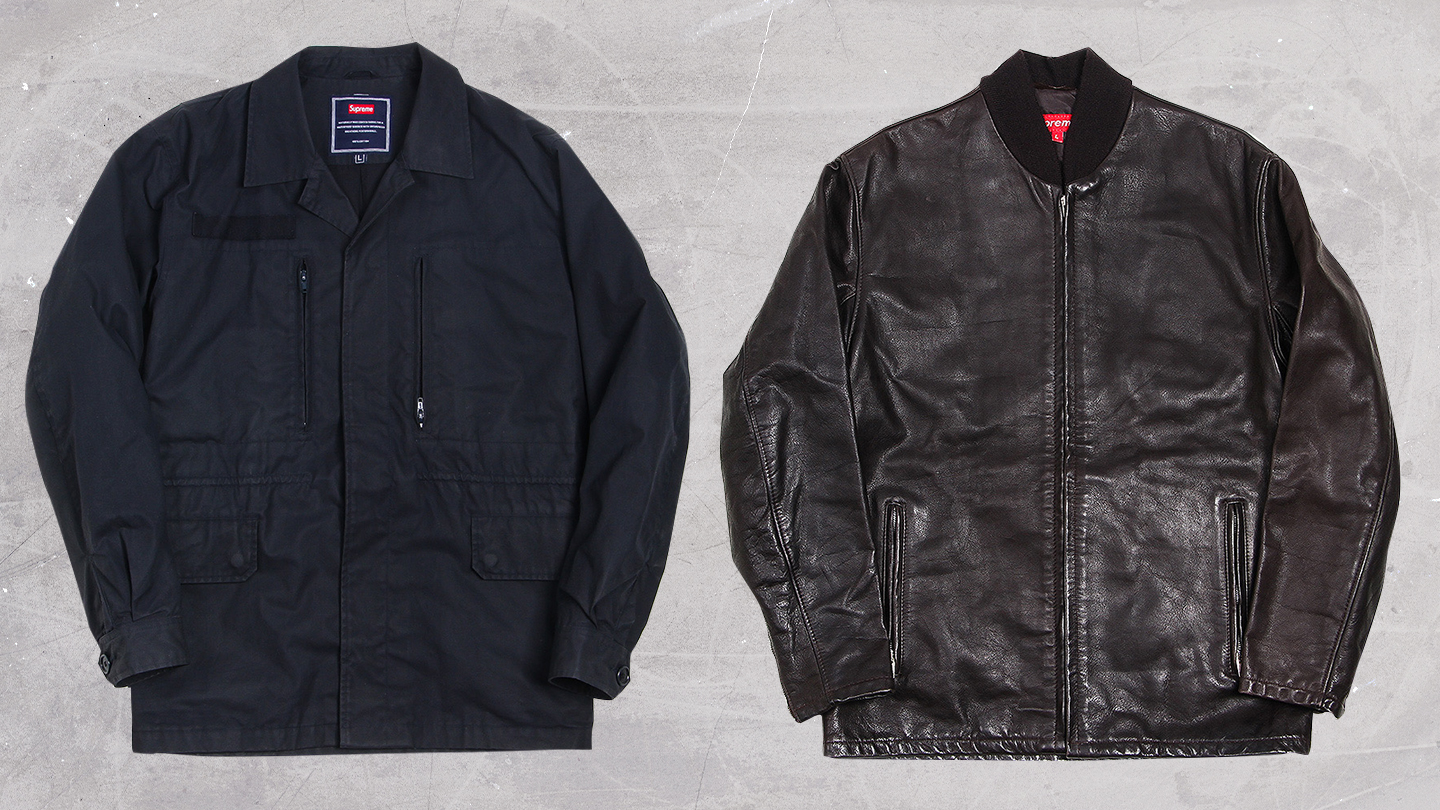
“It was all functional, but at the same time it looked nice and kind of dressy. I think that’s why Supreme got called the Gucci of skateboarding,” says former pro skateboarder Spencer Fujimoto about some of Supreme’s first cut-and-sew pieces, like an M-65 jacket. “It was good for the daytime, it was good for nighttime. You’d go from skating right to the club and not really have a big problem at the door. It was super cool because not a lot of people knew about it. It looked expensive and you didn’t even need to see the big logo on it.”
Galan and Heath say, during their time designing, they knew little about how Supreme was faring financially. But it became evident that it was growing every year. Jebbia hired more designers such as Eric Elms, a graphic designer who was also KAWS’ studio assistant, and Luke Meier, who launched OAMC and co-creative directs Jil Sander with his wife, Lucie Meier. Meier was the fourth employee hired and got his start working for New York City stores such as Blades, Recon, and Generic Costume before spending a decade at Supreme—Meier declined to speak for this story. Eventually, in 2002, Supreme moved into a three-floor office at 121 Wooster St. Although box logo T-shirts and camp caps became popular items at its Lafayette Street store, Heath says Supreme still wasn’t as popular in New York City as it was in Japan during the early aughts.
“In 2004, if you knew, you knew. All the streetwear guys knew, and they all wanted the store and the reputation that Supreme had,” says Heath, who noted when Supreme only published lookbooks in underground Japanese magazines like Relax and Asayan and barely had a line outside the store on Lafayette. “But somebody in New Jersey or Connecticut might not have ever even heard of it.”
If anything could have predicted the brand’s future, it was the hype attached to Supreme’s first Nike SB collaborations in 2002 and 2003. They were groundbreaking sneaker drops that originally started through a disagreement between the two brands.
“The minute we set that elephant Dunk off, that was it. Supreme made a Nike and everyone wanted a piece of it.”- Augie Galan
“Nike was trying to get into skateboarding, so they hit up James for all this information because he’s got a skate shop in New York, Supreme, and they see what’s going on. They ended up doing their own thing and did not include James,” says Heath. “He gets all pissed off, calls me up and says, ‘Hey, you know the Nike font? Can you make ‘Fuck Nike’ T-shirts in that Nike font?’ No problem—banged it out real quick. He comes over and tells us the story: They had wined and dined him twice and left him in the dust.” In recent years, those “Fuck Nike” T-shirts from 2001 have resold for over $1,000. Neither Heath nor Galan know exactly how their old boss rekindled a relationship with Nike, but when the SB deal was back on the table, Heath says, Jebbia’s goal was simple. It was to put out an SB that was going to be better than everybody else’s. Skateboard brands like Alphanumeric, Chocolate, and Zoo York all had their moment. When it was Supreme’s time to shine, Jebbia landed on reimagining two colorways of the “Cement” Air Jordan III as a low top Nike Dunk.
“The minute we set that elephant Dunk off, that was it. Supreme made a Nike and everyone wanted a piece of it,” says Galan. “By the time we put out those elephant-print Dunks, I think the hype for sneakers was already there. It was just not nearly as hardcore as it is now, but it was there for sure.” Galan notes that Supreme employees were even caught attempting to resell pairs to a sneaker store in Brooklyn when the shipment arrived. In September 2002, the Dunk officially dropped, creating some of the first line-ups in front of the Lafayette Street store.
“One hundred percent, the Nike Dunk changed the shop,” says Story. “That sneaker, what it became and what it means to sneakers today, it pretty much said that we’re here. That’s when the Lafayette store got heavy with lines and when James started to get really strict about who can be in the shop and who can’t.”
Yet despite the brand’s continuous growth, the members of its original design team began to pursue their own projects in the early 2000s. Babenzien briefly left Supreme to launch Noah for the first time in 2002, but came back in 2006. He left again in 2015 to relaunch Noah and now operates flagship stores in New York and Japan. A couple of years later, Heath and Galan followed suit. “The pressures of just being in a small company can sometimes get to you. There’s a lot of hats you have to wear, and sometimes you just don’t want to wear them,” says Heath, who left the brand in 2004. “Just seeing how Brendon moved on and other people were doing stuff, I wanted to do my own thing.”
In 2006, Galan also left Supreme and teamed up with Heath to launch Acapulco Gold, a New York streetwear brand that they sustained for nearly 12 years. “Supreme, since it was a very small team, you had to learn every aspect of business,” says Heath. “It was like a school that just taught you everything just because you’re in it, building this thing. So when you step out to do your own thing, you already have this great education.” Today, both Heath and Galan still work in streetwear. Heath is a senior graphic designer for Kith, and Galan works for her brand he'd rather not disclose.
“Obviously they’re still doing their thing now and making money, but the early days of a brand always mean something,” says Galan. “All of us just had this really crazy work ethic where we knew what we were doing was important and special. We wanted to pay real respect to James and really do it right because it was a moment in time that wasn’t going to ever be replicated.”
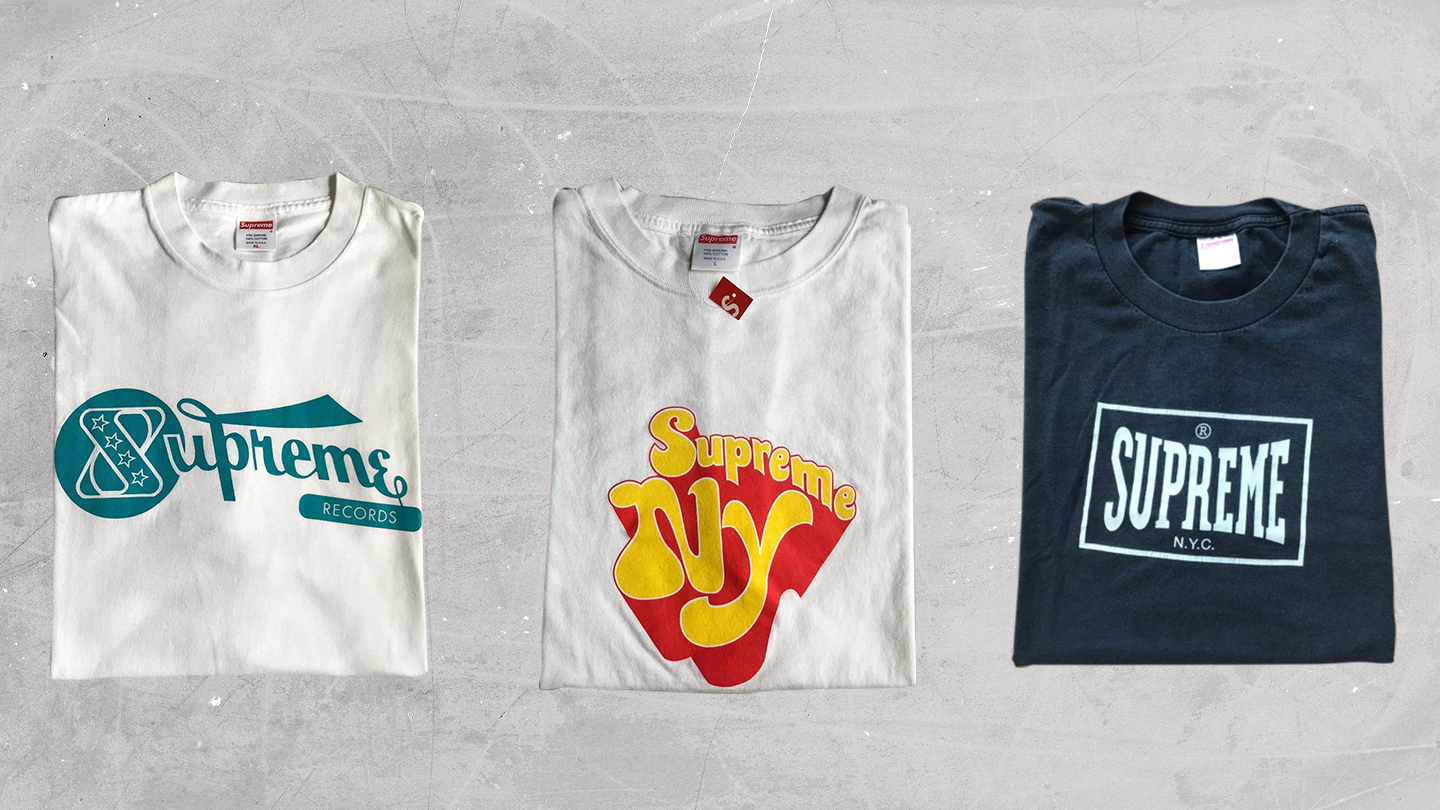
While standing outside of 17 Vestry St. today, Heath is wearing a plain black hoodie, jeans, and workwear boots. It's almost exactly how he is dressed in an old photo Galan took of the entire Supreme design team. In the photo they are working inside the office that we're currently standing in front of. Jebbia is in the photo, too. Babenzien is fitting him for a leather Schott jacket, Heath is sitting next to an iMac and a bulletin board filled with fabric swatches and ideas for graphics, while Meier is pensively watching Jebbia. It's hard to imagine that a clothing brand as big as Supreme was once run out of an office space that looked no larger than your average studio apartment. Heath stopped by the company’s offices a couple years ago and noticed 50 to 60 people working there. In jest, he questions what all those people were doing when he was able to get the job done with just four other people.
But Heath comes off as humble and reserved about his work for Supreme. Although not many specific memories come to him as he stands outside of 17 Vestry, he happily remembers having the freedom to live off making great clothes while still having a moment to toss a football around on this dead-end street with his coworkers. But one memory that that does surface is when Jebbia asked everyone to come down to 17 Vestry to help unload a fresh shipment of skateboard decks on Labor Day. Heath was the only employee who actually showed up.
The decks were not stored in boxes and the straps holding all of them together had snapped en route from the Chapman Skateboards factory in Long Island. So, one by one, Heath brought in the decks, printed with a bootleg Supreme Louis Vuitton monogram that he designed, into the building. Beanies, hats, and a box logo T-shirt would later be added to the bootleg Louis Vuitton ensemble. But when Supreme was hit with a cease-and-desist quickly after the collection’s release, a team of retired firefighters came down to 17 Vestry to pick up the “counterfeit merchandise” and tossed it into an incinerator on Staten Island. Recently, a set of three decks Heath designed sold for $15,000 at a Christie’s auction. Comparatively, a set of three decks by the revered contemporary artist Damien Hirst for Supreme sold for just a fifth of that price.
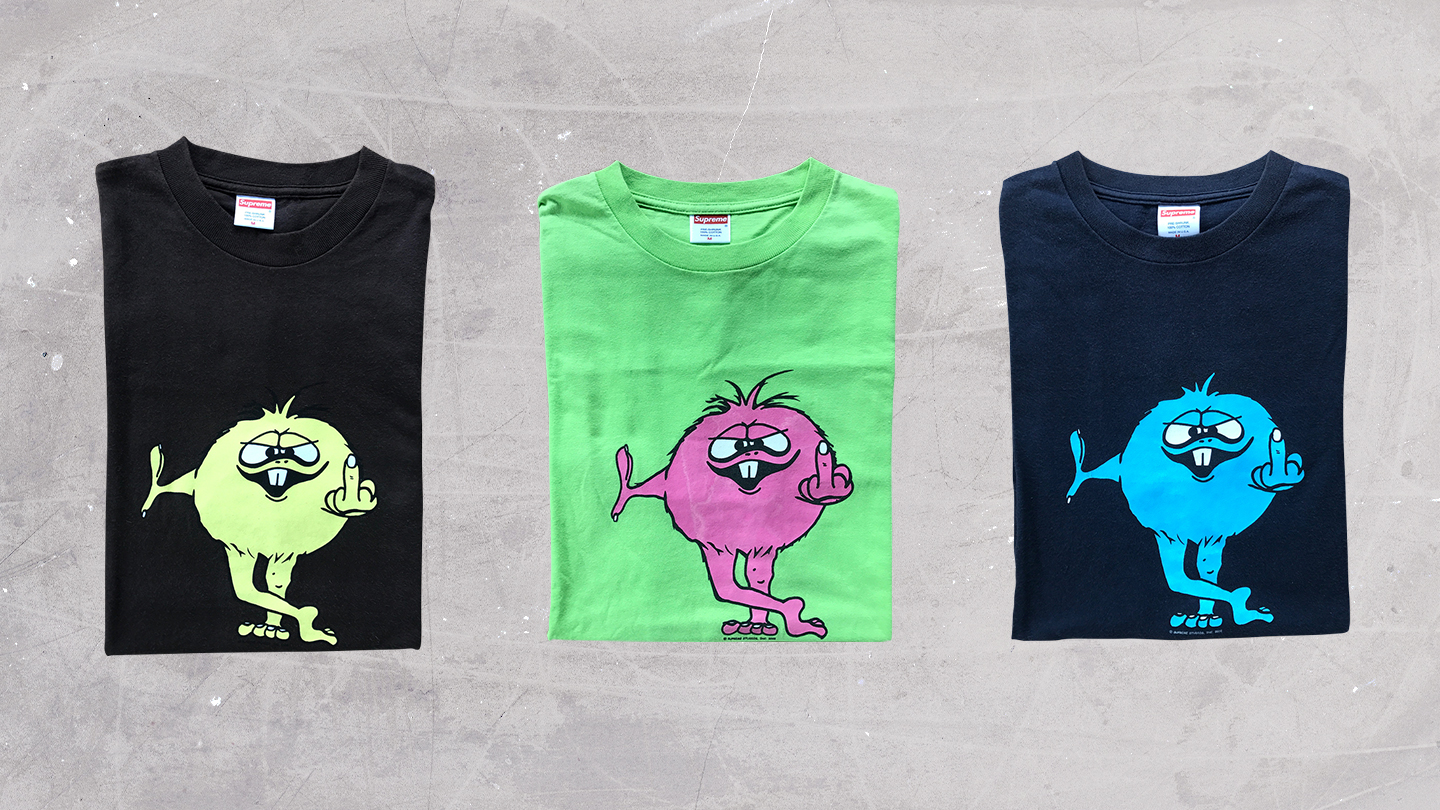
“At the time, it’s cool to just see what you designed up in the store and then see it on the street,” says Heath. “Now, to see it at Christie’s and remembering how it got there is a weird and creepy memory to see, but it’s cool to see it all together."
Even when Jebbia accepted his 2018 CFDA Award for Menswear Designer of the Year, he tersely told the crowd that he did not consider himself to be a designer or Supreme to be a “fashion brand.” What has become clear about Supreme is that the brand is built by the like-minded creatives that Jebbia assembles, rather than just its quiet and mysterious leader. To this day, Supreme sources its innovative designs from, among others, the likes of underground New York City graffiti writers and cyber punk Japanese embroiderers. Even though it has closed its original location on Lafayette Street, officially collaborated with Louis Vuitton, secured a $500 million investment from the Carlyle Group, worked with Oreo, and is becoming more emblematic of mainstream culture with its box logo appearing on a new Instagram influencer every day, Heath still feels that Supreme has stayed true to the ethos it established in its earliest days.
“There might be minor tweaks visually, but for the overall feeling and life of the brand, it’s pretty much the same,” says Heath. “It's always about high-quality clothing and graphics that are thought about and not just slapped on. It’s always about moving forward and not caring about what everyone else thinks. I still get that same feeling today.”

